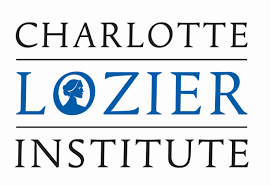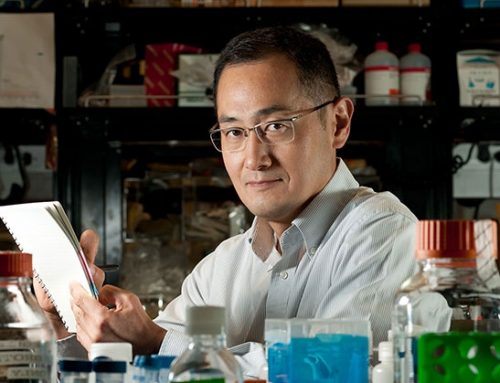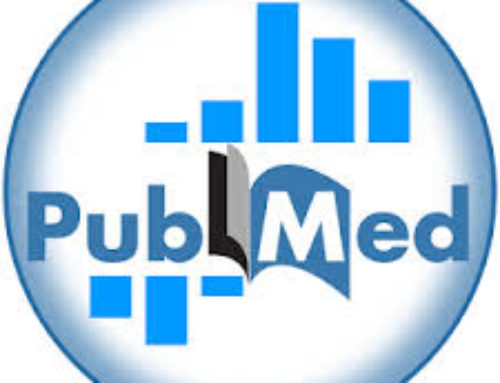Eugene C. TarneOctober 30, 2023
This is Issue 15 of CLI’s On Science Series.
Twenty-five years ago, scientists first isolated human embryonic stem cells (hESCs).[1] Shortly after this development, the use of these stem cells in medical research had become a major public policy controversy in the United States. Proponents hailed human embryonic stem cell research (hESCR) as a necessary and morally unproblematic breakthrough that would usher in a new era of miracle cures. Opponents objected that the destruction of human life essential to hESCR made the practice unacceptable, and that there were ethically, and practically, superior alternatives.
Today, the topic of human embryonic stem cell research has all but vanished from the headlines and public discourse. But 25 years ago, that was not the case. It is difficult to imagine today, but in those few years before 9/11, hESCR was a major topic of debate nationwide—politically, scientifically, and in the media.
In the intervening years, it is the opponents of hESCR, rather than its proponents, who have been vindicated.
Human embryonic stem cells are undifferentiated cells that develop at the earliest stages of embryonic development. These stem cells are called “pluripotent” because, as the embryo develops and grows, they begin to differentiate and form every tissue and organ in the human body. Because of this ability, this “pluripotency,” scientists speculated that they had enormous potential to repair and regenerate damaged tissues and organs.
Beginning in December of 1998 and over the next several years, the controversy over human embryonic stem cell research picked up steam. Congress held numerous hearings on the topic. The peer-reviewed journal Science featured stem cell research on the cover of its February 25, 2000 issue, and it was the subject of cover stories in National Geographic, Time, and Newsweek. In August of 2001, President George W. Bush delivered his first televised address to the American people. The subject? Human embryonic stem cell research.[2]
“Already, in the short time since the generation of these cells was announced, we can conceive of many important applications in the treatment of heart disease, diabetes, Parkinson’s disease, and Alzheimer’s disease,” Lawrence Goldstein, professor of Pharmacology at UC San Diego, said in testimony before Congress in 1999. “In fact, the list of possible therapeutic uses is almost endless. These broad applications are likely, because it may be possible to coax stem cells to become the many types of cells often lost to the ravages of disease.”[3]
That speculation soon gave way to unrelenting and almost unprecedented hype.
The “best and brightest”—from scientists and researchers, to politicians, patient advocacy groups, and high-profile Hollywood celebrities—all assured us that human embryonic stem cell research would usher in a new era of medicine. Proponents of the research showed no hesitancy in touting what they considered the almost unlimited capacity of human embryonic stem cells to treat or cure many of the cruelest diseases and conditions.
In a prepared joint statement before a Senate committee in 2000, NIH officials Gerald Fischbach and Allen Spiegel asserted, “Virtually every realm of medicine and human health might benefit from this innovation. [Human Embryonic] Stem cell research could alleviate a great deal of human suffering.”[4]
Michael West, then-president and CEO of Advanced Cell Technology, similarly declared embryonic stem cells to be among the gifts “that mankind occasionally is given … that can greatly advance the human condition.”[5]
Dr. Bert Vogelstein of Johns Hopkins University testified that embryonic stem cells would prove beneficial “for any of these diseases, Alzheimer’s disease, Parkinson’s disease, a variety of spinal cord injuries, certain types of diabetes, many others … The only hope on the horizon is through transplantation of these [embryonic] stem cells.”[6]
More than once, the late Senator Arlen Specter proclaimed that hESCR “could result in a veritable fountain of youth by replacing diseased or damaged cells.”[7] For Representative Nancy Pelosi, the promise of hESCR was nothing less than biblical in scope: “Science is a gift of God to all of us and science has taken us to a place that is biblical in its power to cure … And that is the embryonic stem cell research.”[8]
The Alliance for Aging Research said that because of hESCR we can “imagine a world without debilitating costly diseases such as Parkinson’s, heart disease and diabetes.”
The actor Christopher Reeve, best remembered for his movie portrayal as Superman and himself the victim of a debilitating spinal cord injury, declared to a Senate committee that “for the true biological miracles that researchers have only begun to foresee, medical science must turn to undifferentiated [embryonic] stem cells.”[9]
In a CNN interview, actor Michael J. Fox unequivocally stated that human embryonic stem cell research has the “potential to eliminate diseases, literally save millions of lives.”[10] Fox repeated such sentiments in testimony before Congress, and other Hollywood celebrities, including Mary Tyler Moore and Kevin Kline,[11] also appeared before Congress touting the importance of hESCR.
And on it went.
A similar scenario played out on the state level in California. Prominent Hollywood figures, including director Jerry Zucker and, again, Christopher Reeve and Michael J. Fox, were instrumental in the passage of that state’s Proposition 71,[12] which provided $3 billion over 10 years in state funding for stem cell research—in particular, hESCR.[13]
In the lead up to the vote on Prop. 71, California voters were bombarded with ads promising unheard-of medical miracles from hESCR. Robert Klein, a wealthy California real estate developer who spearheaded the effort to pass Prop. 71, said that hESCR was “one of the great watershed discoveries in history.”[14] Prop. 71 supporters circulated a study that claimed California would reap a windfall from the royalties that would result from all the cures and therapies to come from hESCR.[15]
The hype achieved its purpose, and Prop.71 easily passed. The California Institute for Regenerative Medicine (CIRM) was established to oversee distribution, over 10 years, of $3 billion in Prop. 71 funding. CIRM rightly billed itself as the “largest source of funding for stem cell research outside the National Institutes of Health.”[16]
Moreover, some asserted that all these medical miracles would be achieved in a relatively short time—within anywhere from 5 to 15 years.
“[I]t seems to me that within the course of the next decade or two, with an appropriate cadre of investigators, that many, many diseases would be at least treated, if not entirely cured, by the kinds of [embryonic stem] cell therapies we are talking about,” predicted Harold Varmus, director of the NIH, in a 1998 Senate hearing.[17]
At that same hearing, Dr. John Gearhart was asked for a timeline for using hESCs to treat Parkinson’s.
“[W]hat kind of a time line do you see on the kind of research you have done to provide practical answers to problems like Parkinson’s or Alzheimer’s or cancer?” Gearhart was asked. He responded, “Actually, I think Parkinson’s will be one of the first targets and one that we will see in a short period.”[18]
At a Senate Hearing the following year, Dr. Lawrence Goldstein said that “we could see some hope” for treating Alzheimer’s in “maybe 5 to 10 years,”[19] while Doug Melton, a Harvard researcher representing the Juvenile Diabetes Foundation, said he was maybe just “years” away from developing cells suitable to treat diabetes using hESCs.[20]
In California, proponents of Prop.71 claimed that within the 10 years of stem cell funding and research the referendum called for, enough cures and therapies would be developed to generate up to $1 billion in revenues for the state.[21]
Five years have come and gone. Ten years. Twenty years. Twenty-five years—a quarter century—have gone by since human embryonic stem cells were isolated and made available for research.
There is as an old business adage to the effect that one should always “under-promise and over-deliver.” It turns out proponents of hESCR did exactly the opposite: they wildly over-promised and grotesquely under-delivered. Today, twenty-five years on, there are no cures and therapies based on hESCs. The citizens of California are not reaping windfall profits from the medical use of hESCs, and there are no successful clinical trials using hESCR.
A peer-reviewed article in Science Translational Medicine even studied the pervasive bias, overpromising, and related scientific communication issues during the period of hESCR hype. In the article, aptly titled “Stem Cell hype,” authors Kalina Kamenova and Timothy Caulfield concluded that their “findings raise questions about the degree to which the media’s overly optimistic slant fosters unrealistic expectations regarding the speed of clinical translation and highlight the ethical responsibility of stem cell researchers as public communicators.”
“Given that media professionals traditionally rely on the scientific community as a major source of science news,” they go on to write, “our finding that scientists have provided, in most cases, authoritative statements, either by implication or through a direct quote, regarding unrealistic timelines for SC therapies raises a more general concern about the role of scientists as public communicators.”[22]
So, given the manifest failure of hESCR to live up to its extravagant promises, what explains all the hype deployed to promote it?
For all the alleged therapeutic potential of hESCR, the research itself is ethically compromised by its very nature. That’s because the only way to obtain human embryonic stem cells is to destroy a living human embryo—i.e., to destroy a human life at its earliest stage. The very act of harvesting the stem cells destroys the living human embryo.
While at the time many proponents of hESCR considered these ethical concerns nothing more than typical conservative Christian handwringing, they could not so easily be dismissed.
The National Bioethics Advisory Commission (NBAC), the first presidential commission to specifically address the issue of hESCR, recognized the legitimacy of the ethical concerns raised by this research: “We believe that most Americans agree that human embryos should be respected as a form of human life,” though they also said that “disagreement exists … about the form that such respect should take.”[23]
James Thomson himself, the first to derive a human embryonic stem cell line in 1998, acknowledged the ethical problems of the research and took to task those who would easily dismiss them: “If human embryonic stem cell research does not make you at least a little bit uncomfortable, you have not thought about it enough. I thought long and hard about whether I would do it.”[24]
Of course, Thomson did continue working with embryonic stem cells. And even while recognizing that human embryos deserve respect as human life, the NBAC nonetheless argued that “a principal ethical justification for public sponsorship of research with human ES or EG cells is that this research has the potential to produce health benefits for individuals who are suffering from serious and often fatal diseases,”[25] and thus “the scientific and clinical benefits of [human embryonic] stem cell research should not be foregone.”[26]
Proponents thus adopted a classic “ends justify the means” rationale to promote hESCR. In other words, an ethically problematic assertion (the ends justify the means) was deployed to promote an ethically troubling practice (the destruction of human life for research).
But even if we assume that good ends can justify morally problematic means (which we should not), those ends ought to be very good indeed, self-evidently and irresistibly so.
Hence all the hype that came to surround the push for public funding and support for hESCR. Concern for the destruction of frozen embryos could hardly be allowed to stand in the way of the miracle cures—the “fountain of youth”—that hESCR would bestow on humanity.
During one congressional hearing, Sen. Arlen Specter, at the time perhaps the Senate’s leading cheerleader for federal funding of hESCR, encouraged such hype to help guarantee this funding.
After pressing several researchers on how soon their work would start producing all the promised life-saving treatments, Specter explained (or let the cat out of the bag):
“People in Congress like to have figures, even ball park figures. Let me press you on the question, and very seriously, this business of advocacy is a very tough issue. The first thing we have to do is disabuse many of the notions that using embryos is somehow related to destroying human lives. That is a very, very big political issue, and you, ladies and gentlemen, a pretty good-sized group here, ought to be aware of that in terms of your advocacy. You have got to approach a lot of people to disabuse that notion. And then if you talk in terms of being close, and what the dollars will do, then you start to create an impetus for it, so I want to give you just a little insight into advocacy” (emphasis added).[27]
But even as it adopted this ends-justify-the means approach to rationalizing hESCR, the NBAC support was provisional:
“In our judgment, the derivation of stem cells from embryos remaining following infertility treatments is justifiable only if no less morally problematic alternatives are available for advancing the research. But as we have noted, ES cells from embryos appear to be different in scientifically important ways from A[dult] S[tem] cells and also appear to offer greater promise of therapeutic breakthroughs. The claim that there are alternatives to using stem cells derived from embryos is not, at the present time, supported scientifically. We recognize, however, that this is a matter that must be revisited continually as the demonstration of science advances” (emphasis added).[28]
If ethically controversial hESCR should proceed only if morally unproblematic alternatives are not available, then for its proponents the flip side to hyping the promise of hESCR was to downplay or dismiss these morally unproblematic alternatives, such as adult stem cell research.
“Claiming that the promise of adult stem cells trumps the need to study embryonic stem cells is an opinion at the fringe, not the forefront, of scientific thinking,” George Daley, associate professor at Children’s Hospital, Harvard School of Medicine, flatly declared at a 2004 Senate hearing.[29]
But for the most part, non-embryonic, adult stem cell research was damned, and thus dismissed, with faint praise. Yes, adult stem cell research had produced some medical benefits and thus should continue. But those benefits were very limited. For the “true biological miracles that researchers have only begun to foresee,” as Christopher Reeve had put it, hESCR was the only real alternative to provide a way forward.
And now, a quarter of a century after human embryonic stem cells were first isolated, those predicted “biological miracles” haven’t happened. But if they do, it now seems almost certain it won’t be with human embryonic stem cells.
Almost immediately after Prop.71 passed in California, CIRM adopted a tone and course dramatically different from the wildly optimistic goals Prop. 71 proponents had promised for it. In 2006, after the $3 billion in funding had been secured, the institute adopted a 10-year plan that said, “[I]t is unlikely that CIRM will be able to fully develop stem cell therapy for routine clinical use during the ten years of the plan.”[30] This was in stark, and bleak, contrast to all the hype used to promote passage of Prop. 71. As the LA Times reported, “[T]here are no breakthroughs in sight. Gone are the allusions to healing such afflictions as spinal cord injuries and Parkinson’s and Alzheimer’s diseases that dominated the 2004 campaign for Proposition 71. In fact, scientists say, there is no guarantee of cures — certainly not any time soon — from the measure that was optimistically titled the California Stem Cell Research and Cures Act.”[31]
Today, the vast bulk of research grants awarded by CIRM have gone to non-embryonic stem cell research.[32]
By 2012, Michael J. Fox, amongst Hollywood’s most zealous proponents of hESCR, was seeing things differently. In an interview with ABC News from that year, when asked about embryonic stem cells and Parkinson’s, Fox replied that “there have been some issues with stem cells, some problems along the way.” He continued: “It’s not so much that [embryonic stem cell research has] diminished in its prospects for breakthroughs as much as it’s the other avenues of research have grown and multiplied and become as much or more promising. So, an answer may come from stem cell research but it’s more than likely to come from another area.”[33]
Of course, even when the potential of hESCs was being hyped and that of adult stem cells dismissed, a significant body of evidence existed to challenge that view.[34] At a time when human embryonic stem cells had yet to be tried in any human patient, adult stems were already showing promise, in tests with human patients, for dozens of diseases and conditions.[35]
Today, even as the therapeutic promise of human embryonic stems cells has all but vanished, medical advances using adult stem cells continue.[36]
In addition to the steady progress using adult stem cells, hESCs have also largely been sidelined by the discovery of induced pluripotent stem cells (iPSCs).
In 2007, Japanese scientist Shinya Yamanaka discovered a method[37] to create fully pluripotent, embryonic-like stem cells from ordinary somatic (body) cells.[38] Yamanaka dubbed these “induced pluripotent stem cells” because they are generated by inducing somatic cells (such as an ordinary skin cell) into a pluripotent state, making them the functional equivalent of pluripotent embryonic stem cells. In other words, researchers could now obtain an abundant supply of pluripotent stem cells without having to destroy embryos.
So groundbreaking was this discovery that Yamanaka was awarded the Nobel Prize just five years after announcing it.
True to form, proponents of hESCR tried to grab credit for this breakthrough, claiming it never would have been possible without the foundation created by previous research with human embryonic stem cells.
“The iPS breakthrough is being heralded by opponents of stem cell research as a solution to the long-smoldering debate over the necessity for embryonic stem cells,” began George Delay at a House hearing in May of 2008. “[A]nd we have heard the arguments before … I remind you that it was basic stem cell research that really led to the breakthroughs in iPS cell research.”[39]
But contrary to Daley, Yamanaka himself has said that human embryonic stem cells were not crucial to his work. Before his breakthrough in reprogramming human somatic cells to a pluripotent state, Yamanaka’s work in reprogramming utilized mice, not human, embryonic stem cells, and he used the same method for human iPSC production. In fact, Yamanaka himself has said that “[n]either eggs nor embryos are necessary. I’ve never worked with either” (emphasis added).[40]
It was precisely Yamanaka’s determination not to work with ethically compromised hESCs and avoid lethal experiments with human embryos that led to his Nobel breakthrough. Recalling looking at a human embryo through a microscope several years earlier, Yamanaka said: “When I saw the embryo, I suddenly realized there was such a small difference between it and my daughters … I thought, we can’t keep destroying embryos for our research. There must be another way.”[41]
Yamanaka’s breakthrough was not only a watershed for the science of stem cell research, it was a major development in the ethics of how science itself should be pursued.
Proponents of hESCR adopted a strategy of cynical and dishonest hype in order to drown out the voices of those raising ethical concerns over the commodification and destruction of human life in the name of science. For hESCR advocates, such ethical concerns were an obstacle to the pursuit of scientific progress.
Yamanaka, on the other hand, had the moral imagination to peer into a microscope and see his daughters reflected in embryos at the earliest stages of human life. For this Nobel Prize recipient, ethical concerns over destroying human life were not an obstacle to the pursuit of scientific progress, but motivation to excel at it.
Medical research using ethically non-controversial adult and induced pluripotent stem cells continues to advance in the pursuit of cures and treatments, while embryonic stem cells have largely fallen by the wayside, proving that science does not need to kill in order to cure.
[1] James Thomson of the University of Wisconsin and John Gearhart of Johns Hopkins University, working separately, are credited with this development. See J.A. Thomson et al., “Embryonic stem cell lines derived from human blastocysts,” Science 282, no. 5391 (November 1998): 1145-7, doi: 10.1126/science.282.5391.1145; and M.J. Shamblott et al., “Derivation of pluripotent stem cells from cultured human primordial germ cells,” Proc Natl Acad Sci USA 95, no. 23 (November 1998): 13726-31, doi: 10.1073/pnas.95.23.13726.
[2] “President Discusses Stem Cell Research,” The White House: President George W. Bush, accessed October 19, 2023, https://georgewbush-whitehouse.archives.gov/news/releases/2001/08/20010809-2.html.
[3] Stem Cell Research: Hearings Before a Subcommittee of the Committee on Appropriations United States Senate, 105th Congress, 95 (1999) (statement of Dr. Lawrence Goldstein, Professor of Pharmacology, Division of Cellular and Molecular Medicine, University of California at Sen Diego).
[4] Stem Cell Research, Part 3: Hearings Before a Subcommittee of the Committee on Appropriations United States Senate, 106th Congress, 55 (2000) (joint statement of Dr. Gerald D. Fischbach, Director of the National Institute of Neurological Disorders and Stroke, and Dr. Allen M. Spiegel, Director of the National Institute of Diabetes and Digestive and Kidney Diseases).
[5] Stem Cells, 2001: Hearings Before a Subcommittee of the Committee on Appropriations United States Senate, 107th Congress, 105 (2001) (statement of Dr. Michael D. West, President and CEO, Advanced Cell Technology).
[6] Stem Cells, 2001: Hearings Before a Subcommittee of the Committee on Appropriations United States Senate, 107th Congress, 136 (2001) (statement of Dr. Bert Vogelstein, Professor of Oncology and Pathology, John Hopkins Oncology Center; Chairman, National Research Council Institute of Medicine Committee on the Biological and Medical Applications of Stem Cell Research).
[7] Congressional Budget for the United States Government for the Fiscal Year 2006, 109th Cong., 1st sess., Congressional Record 151, no. 32: S2764.
[8] Jeff Zeleny, “House Votes to Expand Stem Cell Research,” The New York Times, June 8, 2007.
[9] Stem Cell Research, Part 3: Hearings Before a Subcommittee of the Committee on Appropriations United States Senate, 106th Congress, 38 (2000) (statement of Christopher Reeve).
[10] “Michael J. Fox Urges Congress to Approve Stem Cell Research,” CNN.com transcripts, CNN, accessed October 19, 2023, http://www.cnn.com/TRANSCRIPTS/0009/14/tod.10.html.
[11] Cloning, 2002: Hearings Before a Subcommittee of the Committee on Appropriations United States Senate, 107th Congress, 59-62 (2002) (statement of Kevin Kline, actor).
[12] “California Proposition 71 (2004),” Embryo Project Encyclopedia, Arizona State University, accessed October 19, 2023, https://embryo.asu.edu/pages/california-proposition-71-2004.
[13] Proposition 71: Stem Cell Research. Funding. Bonds. Initiative Constitutional Amendment and Statute (July 2004). See: https://lao.ca.gov/ballot/2004/71_11_2004.htm#:~:text=The%20measure%20authorizes%20the%20state,and%20research%20facilities%20in%20California.
[14] John M. Broder and Andrew Pollack, “Californians to Vote on Stem Cell Research Funds,” The New York Times, September 20, 2004.
[15] Erin Allday and Joaquin Palomino, “Lofty Promises, Limited Results,” San Francisco Chronicle, September 6, 2018.
[16] “California: The Leader in Stem Cell Research,” CIRM: California’s Stem Cell Agency, accessed October 19, 2023, https://www.cirm.ca.gov/california-leader-stem-cell-research/#:~:text=As%20the%20largest%20source%20of,patients%20with%20unmet%20medical%20needs.
[17] Stem Cell Research: Hearings Before a Subcommittee of the Committee on Appropriations United States Senate, 105th Congress, 28 (1998) (statement of Dr. Harold Varmus, Director, National Institutes of Health, Department of Health and Human Services).
[18] Ibid., 32.
[19] Ibid., 133.
[20] Ibid., 112.
[21] Chris Thompson, “A Penny on the Dollar,” East Bay Express, January 24, 2007.
[22] Kalina Kamenova and Timothy Claufield, “Stem cell hype: Media portrayal of therapy translation,” Science Translational Medicine 7, no. 278 (March 2015): 1-4, doi: https://doi.org/10.1126/scitranslmed.3010496.
[23] U.S. National Bioethics Advisory Commission, Ethical Issues in Human Stem Cell Research, Volume I: Report and Recommendations of the National Bioethics Advisory Commission, Harold T. Shapiro et al. Rockville, Maryland: 1999. https://bioethicsarchive.georgetown.edu/nbac/stemcell.pdf (accessed October 20, 2023), p. 2.
[24] Gina Kolata, “Man Who Helped Start Stem Cell War May End It,” The New York Times, November 22, 2007.
[25] Ethical Issues in Human Stem Cell Research, iii.
[26] Ibid., xi.
[27] Stem Cell Research: Hearings Before a Subcommittee of the Committee on Appropriations United States Senate, 105th Congress, 113 (1999) (response of Senator Arlen Specter).
[28] Ethical Issues in Human Stem Cell Research, 53.
[29] Embryonic Stem Cell Research: Exploring the Controversy: Hearing Before the Subcommittee on Science, Technology, and Space of the Committee on Commerce, Science, and Transportation, 108th Congress, 39 (2004) (statement of Dr. George Q. Daley, Representing the American Society for Cell Biology).
[30] “Executive Summary,” CIRM: California’s Stem Cell Agency, accessed October 20, 2023, https://www.cirm.ca.gov/wp-content/uploads/archive/files/agenda/020309_2006_Executive_Summary.pdf.
[31] Mary Engel, “Reality check for stem cell optimism,” Los Angeles Times, December 3, 2006.
[32] See: https://www.cirm.ca.gov/grants/.
[33] Russell Goldman, “Michael J. Fox Looks Past Stem Cells in Search for Parkinson’s Cure,” ABC News, May 18, 2012.
[34] See, e.g., Gene Tarne and David Prentice, “Playing Politics with Stem Cells,” The American Thinker, August 8, 2010.
[35] Alois Gratwohl et al., “One million haemopoietic stem-cell transplants: a retrospective observational study,” Lancet Haematol 2, no. 3 (March 2015): e91-100, doi: 10.1016/S2352-3026(15)00028-9.
[36] “Treatments,” Stem Cell Connect, accessed October 20, 2023, https://stemcellresearchfacts.org/answers/treatments/.
[37] Kazutoshi Takahashi et al., “Induction of Pluripotent Stem Cells from Adult Human Fibroblasts by Defined Factors,” Cell 131, no. 5 (November 2007): 861-872, doi: https://doi.org/10.1016/j.cell.2007.11.019.
[38] James Thomson – the same James Thomson who first isolated hESCs – is also credited with discovering the process to produce iPSCs. Thomson and Yamanaka worked separately.
[39] Stem Cell Science: The Foundation for Future Cures: Hearing Before the Subcommittee on Health of the Committee on Energy and Commerce House of Representatives, 110th Congress, 76 (2008) (statement of Dr. George Q. Daley, President, International Society for Stem Cell Research and Associate Professor of Pediatrics, Children’s Hospital Boston).
[40] Quoted in David Cyranoski, “Simple switch turns cells embryonic,” Nature 447 (June 2007): 618, doi: https://doi.org/10.1038/447618a.
[41] Martin Fackler, “Risk Taking Is in His Genes,” The New York Times, December 11, 2007.










